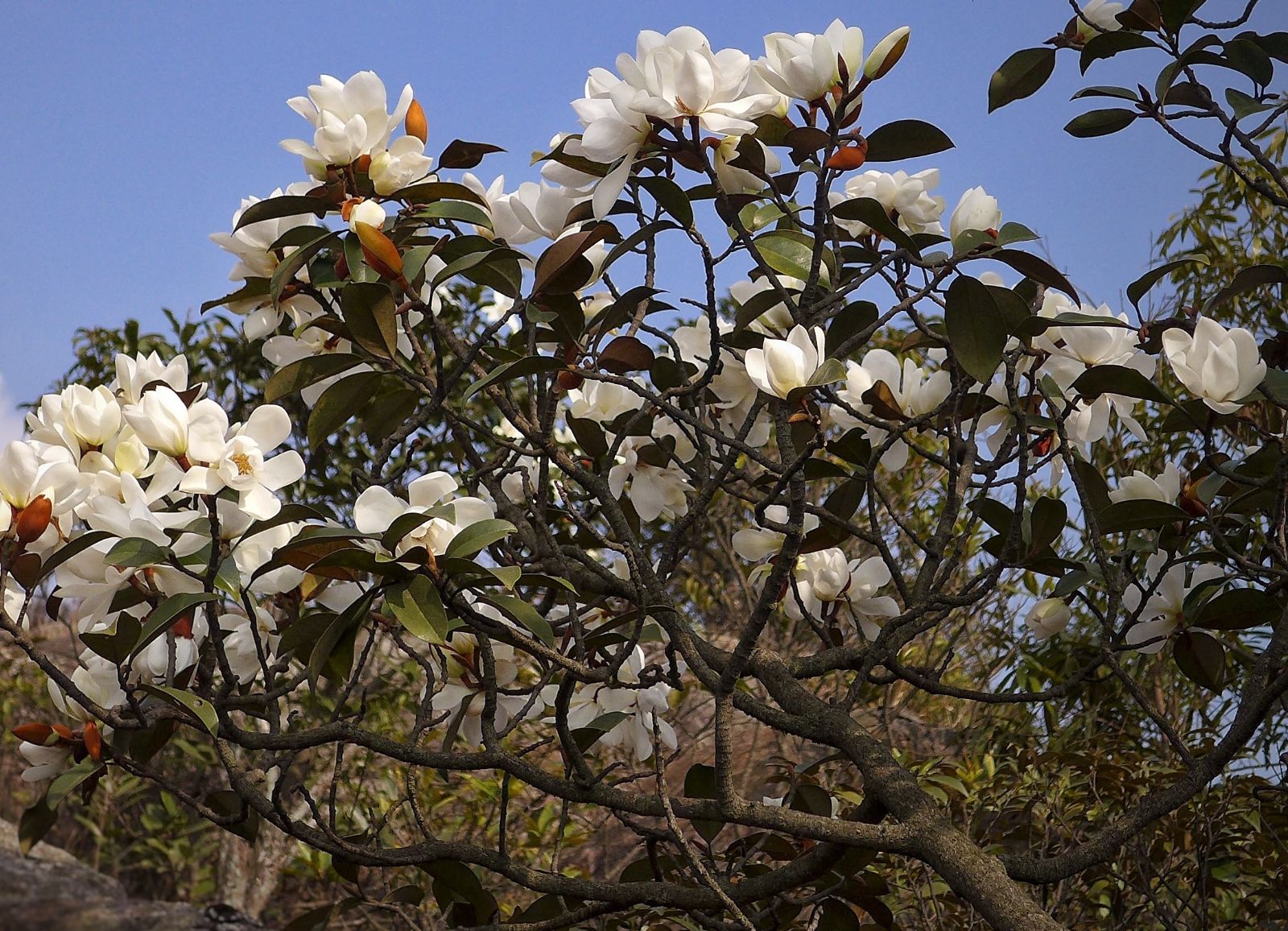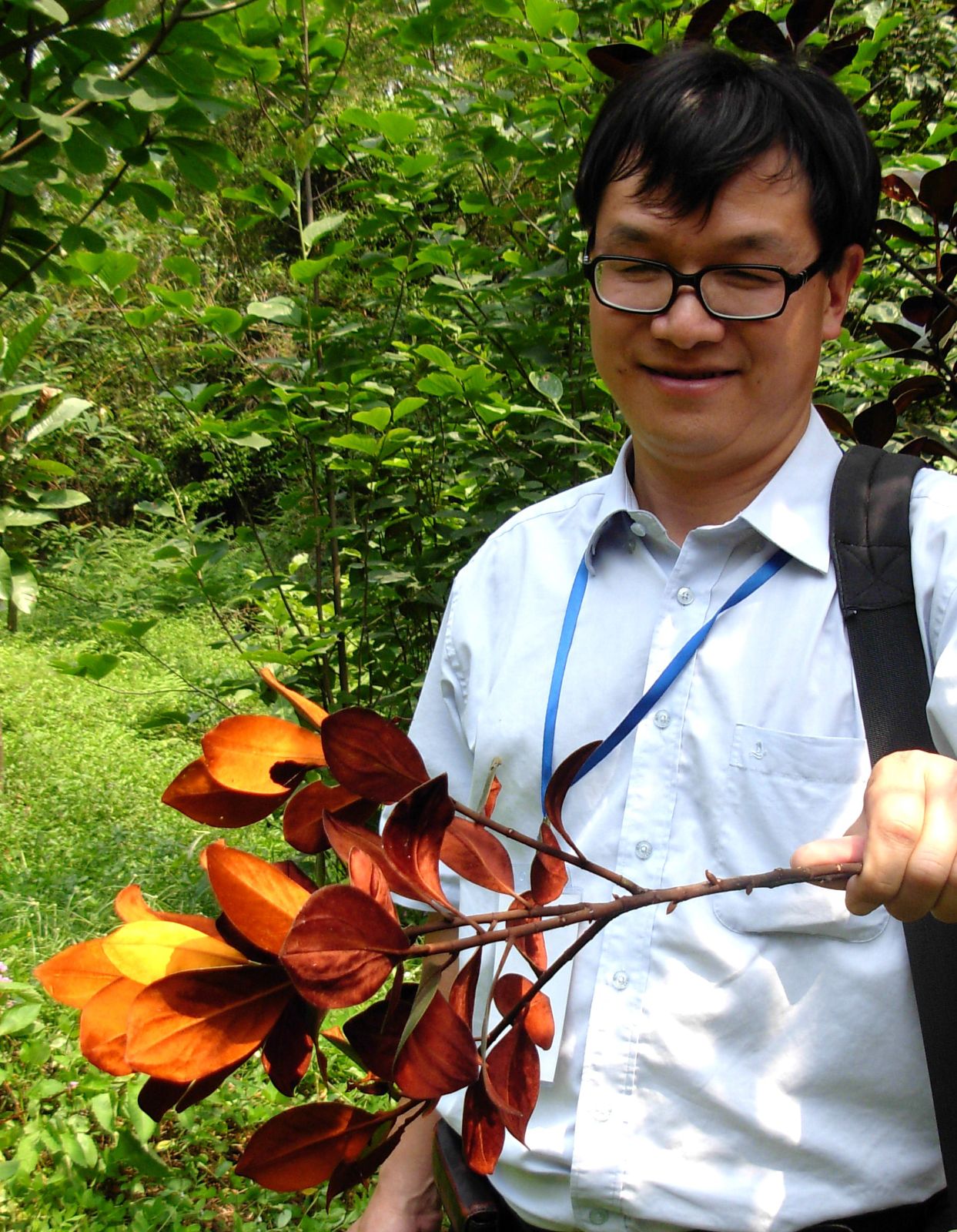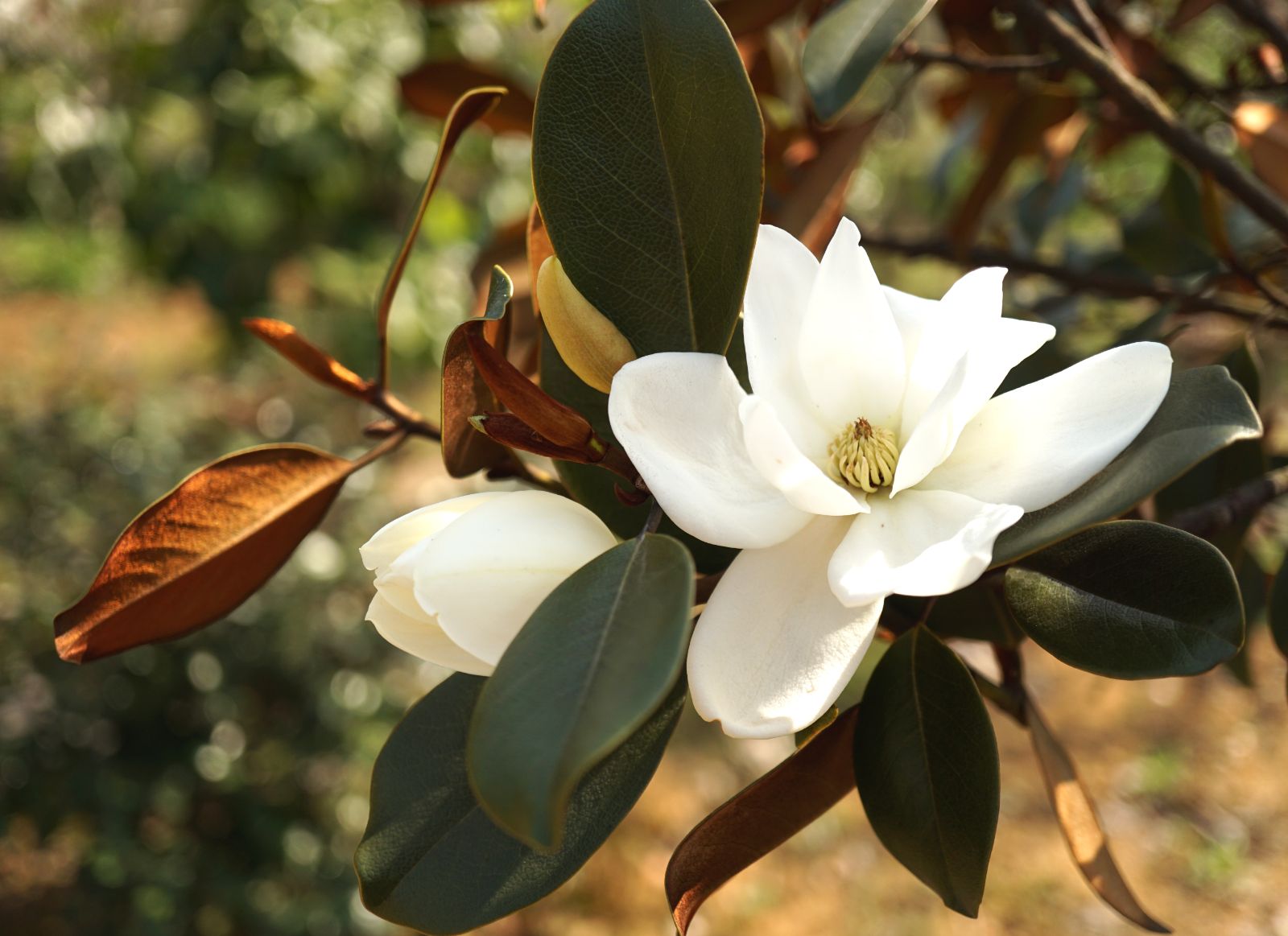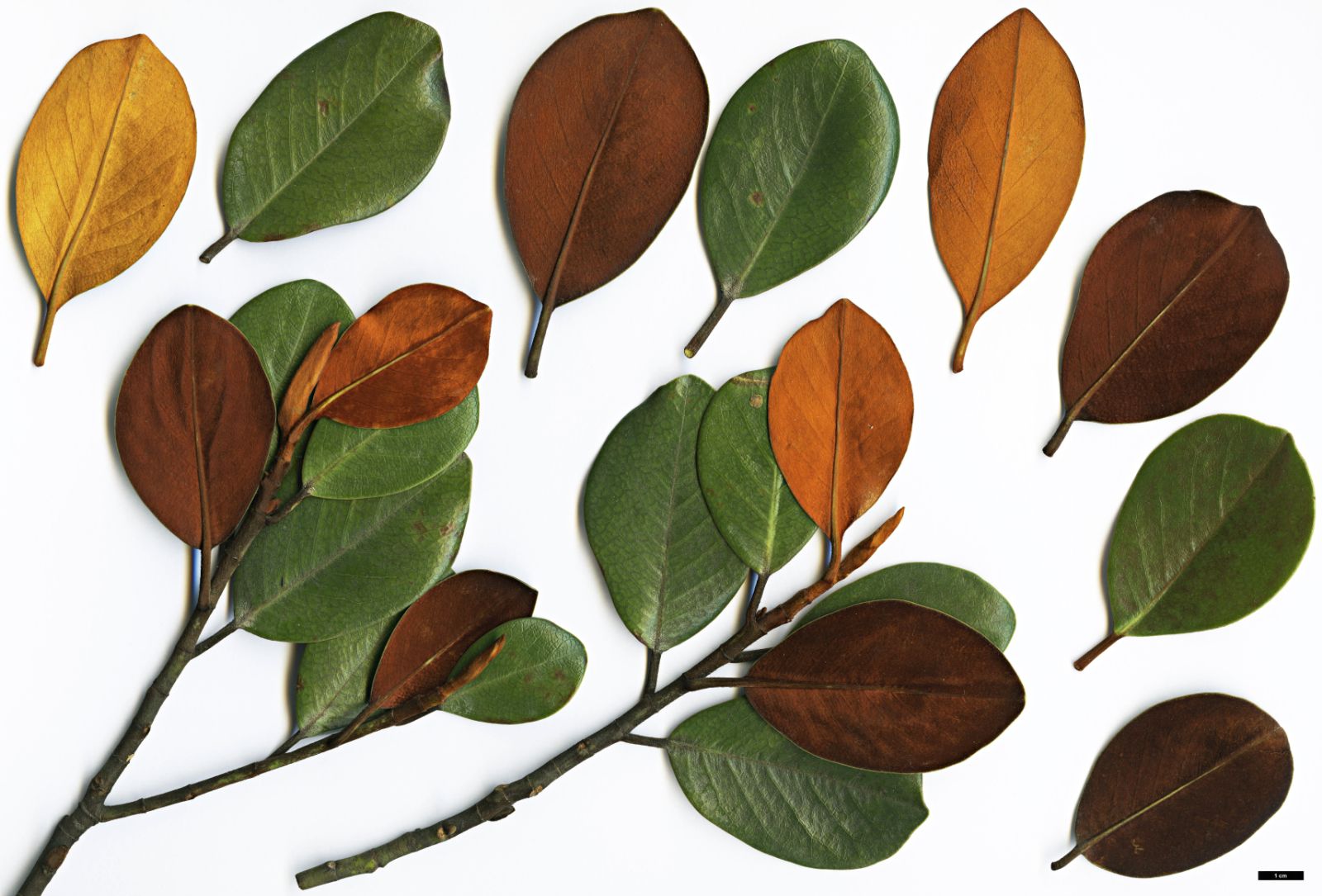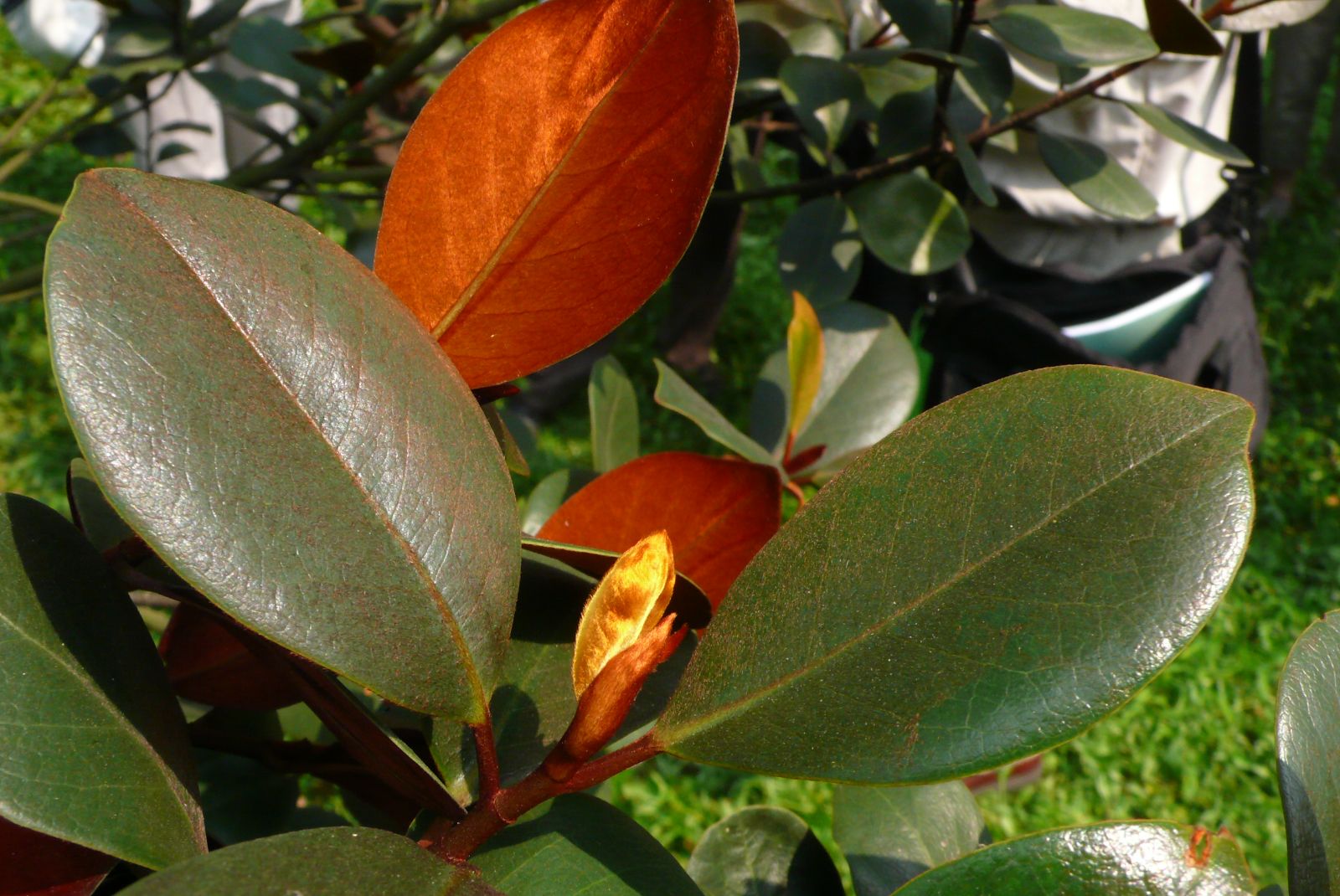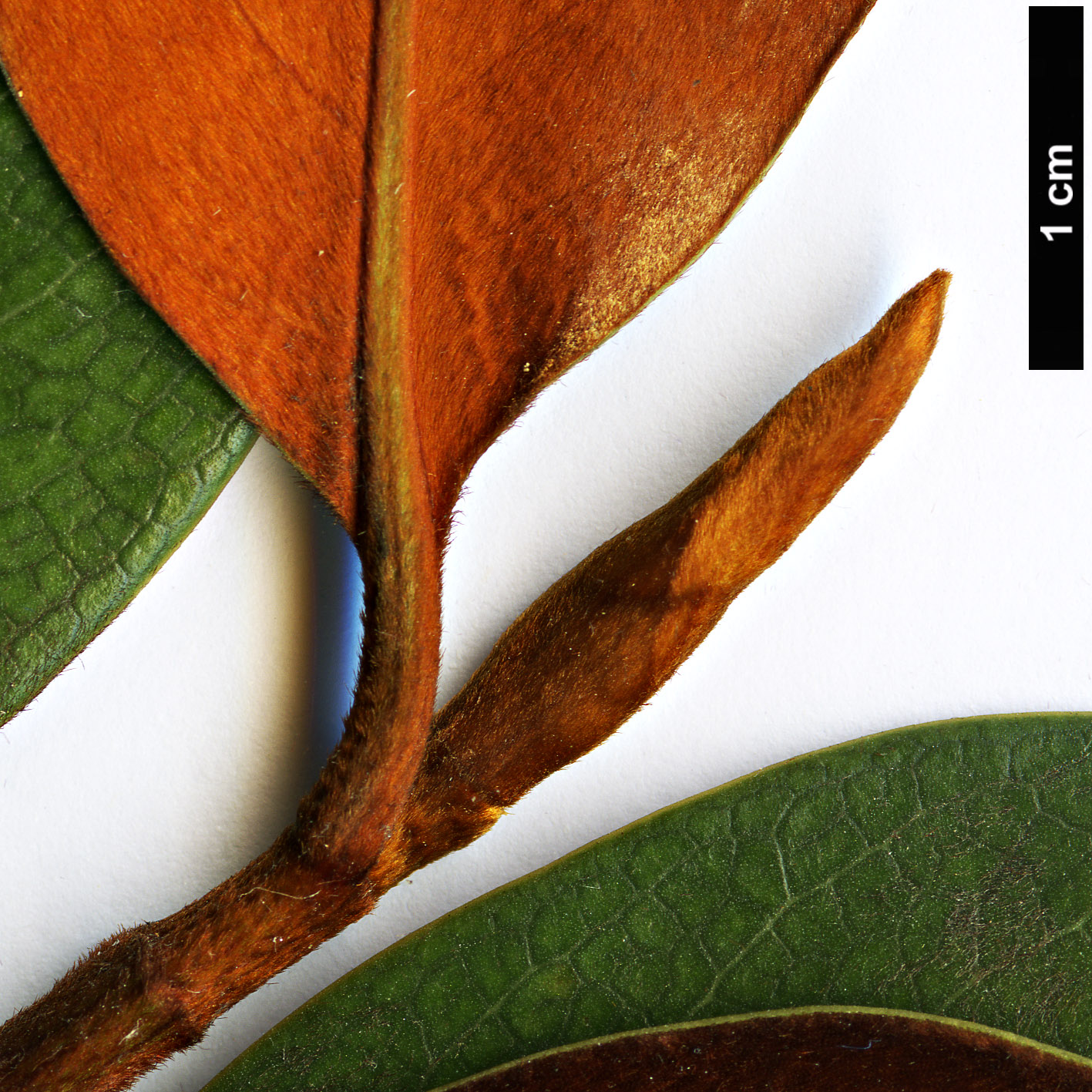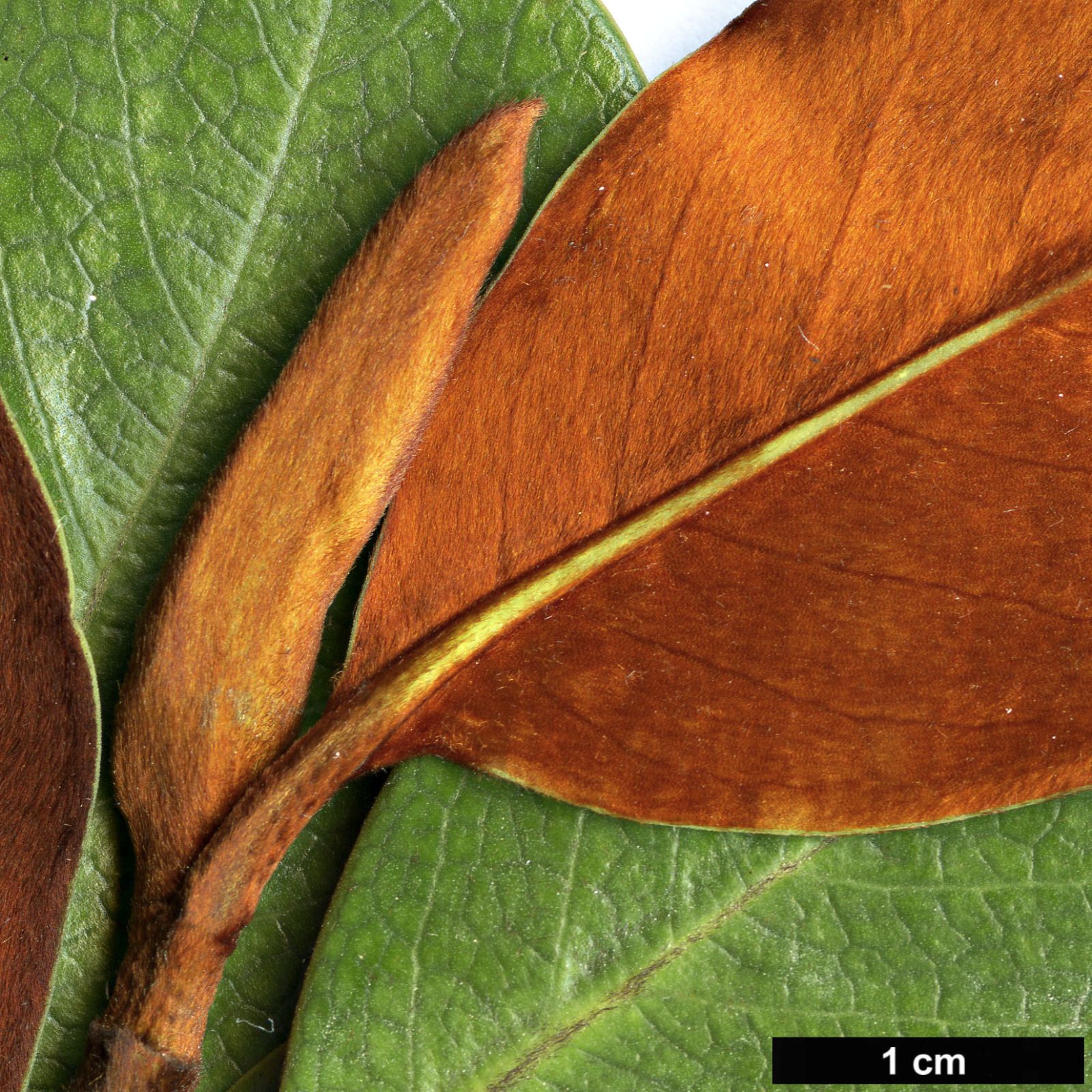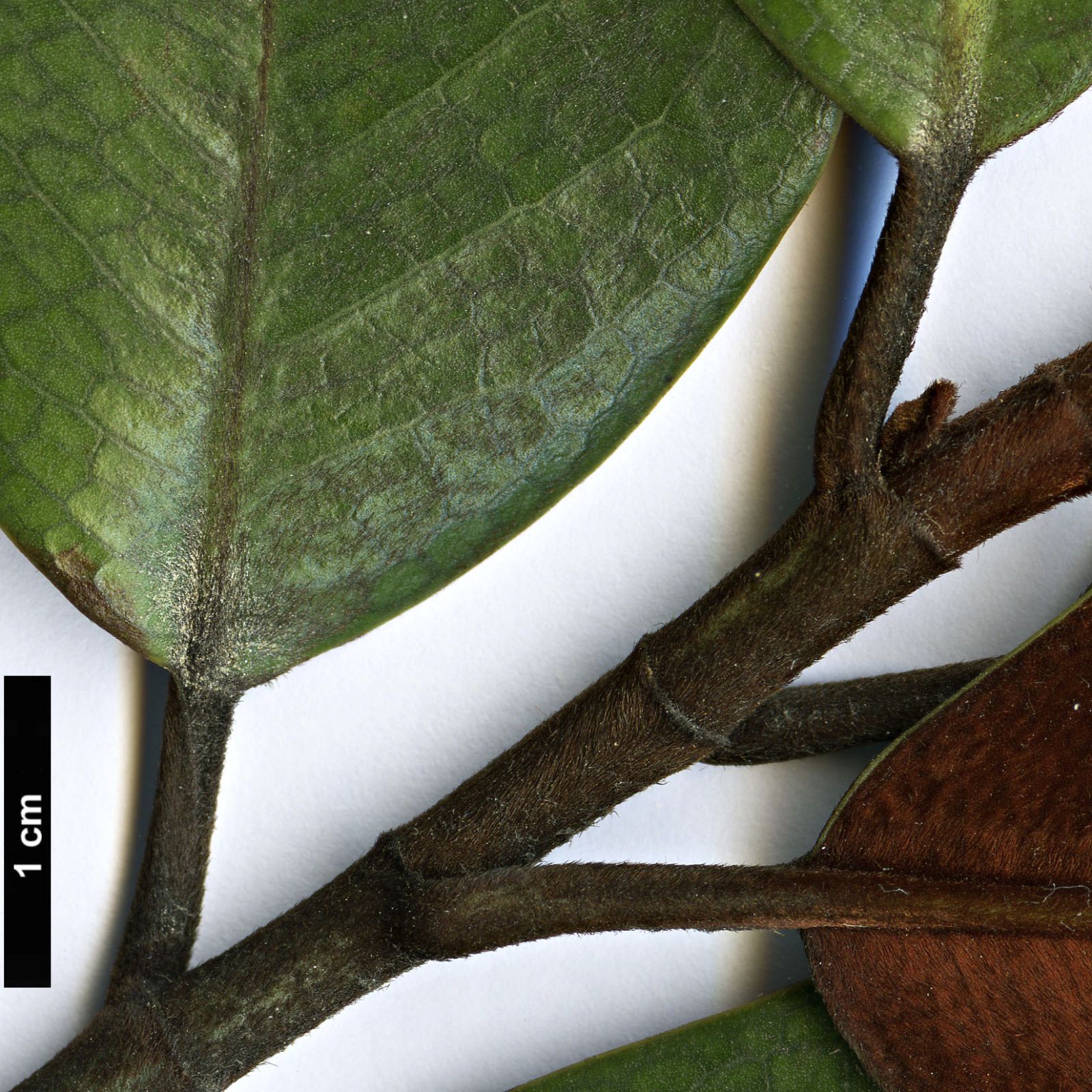Magnolia guangdongensis
Sponsor
Kindly sponsored by
The Roy Overland Charitable Trust

Credits
Julian Sutton (2022)
Recommended citation
Sutton, J. (2022), 'Magnolia guangdongensis' from the website Trees and Shrubs Online (treesandshrubsonline.
Genus
- Magnolia
- Section Michelia
Common Names
- guang dong han xiao
Synonyms
- Michelia guangdongensis Y.H. Yan, Q.W. Zeng & F.W. Xing
Other taxa in genus
- Magnolia acuminata
- Magnolia × alba
- Magnolia amabilis
- Magnolia amoena
- Magnolia aromatica
- Magnolia biondii
- Magnolia × brooklynensis
- Magnolia campbellii
- Magnolia cathcartii
- Magnolia cavaleriei
- Magnolia caveana
- Magnolia champaca
- Magnolia changhungtana
- Magnolia chapensis
- Magnolia compressa
- Magnolia conifera
- Magnolia Cultivars A
- Magnolia Cultivars B
- Magnolia Cultivars C
- Magnolia Cultivars D
- Magnolia Cultivars E
- Magnolia Cultivars F
- Magnolia Cultivars G
- Magnolia Cultivars H–I
- Magnolia Cultivars J
- Magnolia Cultivars K
- Magnolia Cultivars L
- Magnolia Cultivars M
- Magnolia Cultivars N–O
- Magnolia Cultivars P
- Magnolia Cultivars Q–R
- Magnolia Cultivars S
- Magnolia Cultivars T
- Magnolia Cultivars U–V
- Magnolia Cultivars W–Z
- Magnolia cylindrica
- Magnolia dandyi
- Magnolia dawsoniana
- Magnolia de Vos and Kosar hybrids
- Magnolia decidua
- Magnolia delavayi
- Magnolia denudata
- Magnolia doltsopa
- Magnolia duclouxii
- Magnolia ernestii
- Magnolia figo
- Magnolia floribunda
- Magnolia × foggii
- Magnolia fordiana
- Magnolia foveolata
- Magnolia fraseri
- Magnolia fulva
- Magnolia globosa
- Magnolia × gotoburgensis
- Magnolia grandiflora
- Magnolia grandis
- Magnolia Gresham hybrids
- Magnolia hookeri
- Magnolia insignis
- Magnolia Jury hybrids
- Magnolia × kewensis
- Magnolia kobus
- Magnolia kwangtungensis
- Magnolia laevifolia
- Magnolia lanuginosa
- Magnolia leveilleana
- Magnolia liliiflora
- Magnolia × loebneri
- Magnolia lotungensis
- Magnolia macclurei
- Magnolia macrophylla
- Magnolia martini
- Magnolia maudiae
- Magnolia nitida
- Magnolia obovata
- Magnolia officinalis
- Magnolia opipara
- Magnolia × proctoriana
- Magnolia × pruhoniciana
- Magnolia rostrata
- Magnolia salicifolia
- Magnolia sapaensis
- Magnolia sargentiana
- Magnolia sieboldii
- Magnolia sinensis
- Magnolia sinica
- Magnolia sinostellata
- Magnolia × soulangeana
- Magnolia sprengeri
- Magnolia stellata
- Magnolia tamaulipana
- Magnolia × thomsoniana
- Magnolia tripetala
- Magnolia × veitchii
- Magnolia virginiana
- Magnolia × wieseneri
- Magnolia wilsonii
- Magnolia xinganensis
- Magnolia yunnanensis
- Magnolia yuyuanensis
- Magnolia zenii
Shrub or small evergreen tree 1–4 m tall, to 10 cm dbh. Bark and older branchlets greyish brown. Young branchlets and buds with dense, appressed, shiny, rufous pubescence. Leaves thick and leathery, obovate-elliptic to obovate, 4.5–9 × 2.5–4.5 cm, with 4–9 secondary veins on each side of the midrib; upper surface glossy dark green, glabrescent, with conspicuously impressed reticulation; lower surface with dense, rufous to golden appressed hairs; margins slightly revolute, base rounded to broadly cuneate, apex obtuse to acute. Petioles 0.5–1.5 cm, with densely appressed rufous pubescence; stipular scars absent (or too short to discern). Flowers fragrant, opening from buds with dense rufous appressed hairs; tepals 9–12, white with a somewhat greenish base, more or less elliptic, 5–7 × 2–3 cm. Stamens 50–70, 1–1.5 cm, anthers pale green, filaments purplish red, connective exserted to form a 1 mm triangular mucro. Gynophore green, 6–8 mm, puberulous; gynoecium green, terete, 9–14 mm, rufous pubescent; carpels 13–20; ovules 4–6 per carpel; styles purplish red, 1–3 mm, curved outward. Fruit undescribed. Flowering March (China). (Xia, Liu & Nooteboom 2008; description prepared by Richard Figlar)
Distribution China Guangdong
Habitat Thickets and forests, 1200–1400 m.
Conservation status Data deficient (DD)
In Section Michelia, where tall forest trees are the norm, a small or shrubby species will inevitably pique horticultural interest. Magnolia guangdongensis is a recently described, rather poorly known plant (Yan, Zeng & Xing 2004), apparently related to the widespread M. foveolata (q.v.). It differs from it in its much shorter stature, smaller leaves with fewer lateral veins, more numerous and wider tepals, and shorter stamens. Although assessed as Data Deficient in 2012 by the IUCN (2022), Li et al. (2017) consider that it should be rated Critically Endangered, due to extremely small population sizes.
It has been grown as an ornamental to at least some extent in southern China (Xia, Liu & Nooteboom 2008), where it is in the collection of the South China Botanical Garden, Guangzhou (Philippe de Spoelberch pers. comm. 2022). Quite apart from the flowers, the dense rufous indumentum is a real attraction. The species has recently reached cultivation on both sides of the Atlantic in a small and experimental way (even at Tregrehan, with its great collection of michelias, the one young example has not yet been planted outside – T. Hudson pers. comm. 2022). It was introduced to North America by Scott McMahan of Atlanta Botanical Garden, and has been planted outside by other specialists in the southeast, including Dick Figlar, SC, who has also grafted it a number of times. Assessment of hardiness is not yet complete, and while one should perhaps not expect too much of a plant from the far south of China, it has survived in USDA zone 7a/b; ‘collective opinion is that it has a lot of merit’ (J. Nix pers. comm. 2022).

